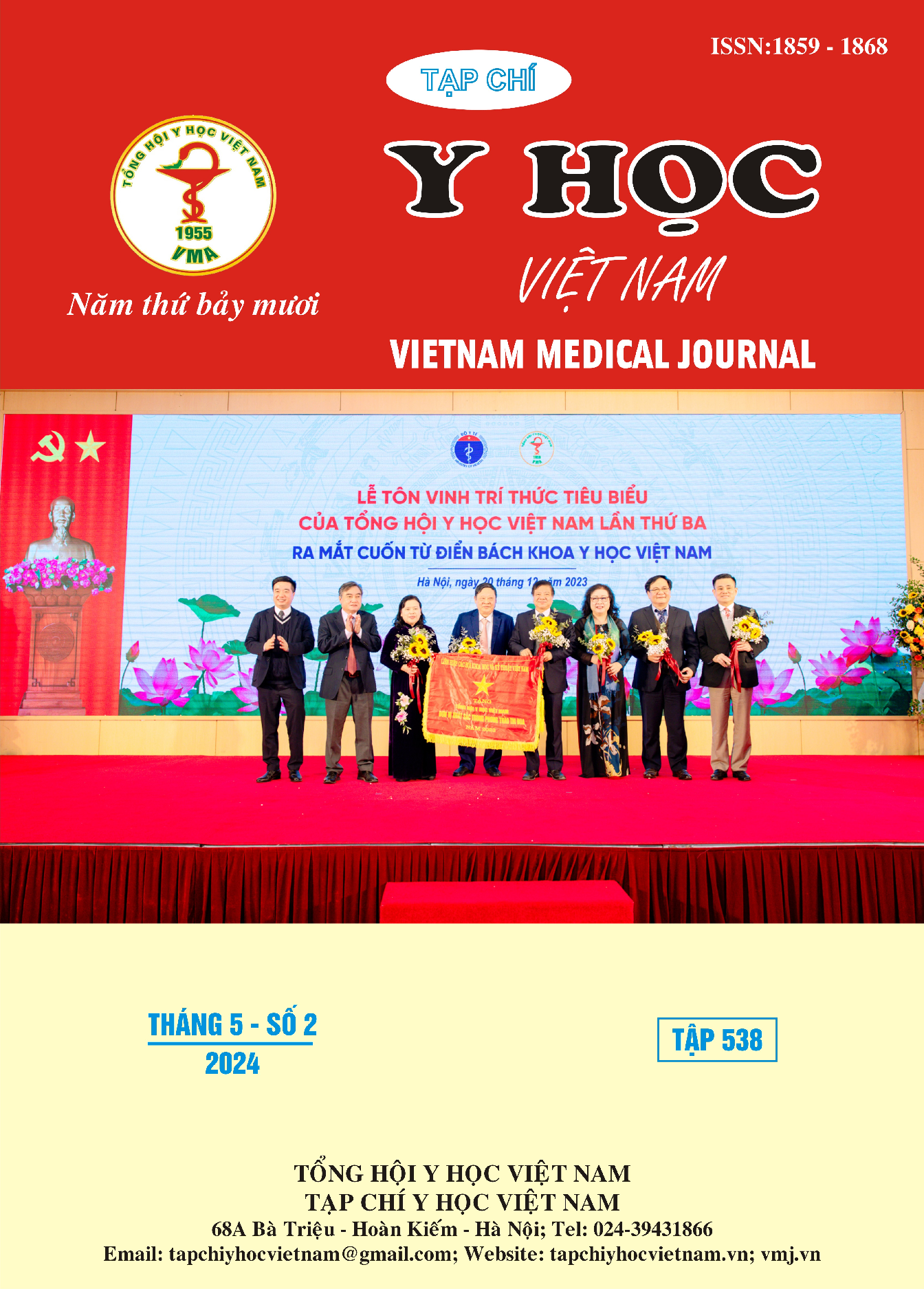THE RELEVANT FACTORS OF CRANIOPHARYNGIOMA RESECTION BY THE PTERION APPROACH
Main Article Content
Abstract
Objective: Evaluate relevant factors in craniopharyngioma resection surgery by the pterion approach. Subjects and methods: Retrospective study describing a series of patients diagnosed with craniopharyngioma, treated at the Neurosurgery Department of Cho Ray Hospital from January 2019 to June 2023, and underwent surgery by pterion craniotomy and we collected 35 cases of patients fulfilling the mentioned conditions. Results: In 35 cases of craniopharyngioma that were operated by the pterion craniotomy, in terms of tumor removal, gross total resection accounted for 25.8%, nearly total resection (≥90%) accounted for 51,4%, 60-90% part of the tumors resection accounted for 17.1%, lower 60% part of the tumors accounted for 5.7%. When we examined relevant factors affecting the extent of tumor removal and patients’ outcomes after opperation, we recorded that the relevant factors included: the properties of the tumor in gross vision, the rate of diabetes insipidus at the hospital discharge time and the recurrence rate; Meanwhile, the irrelevant factors included: age groups, gender, clinical symptoms, tumors’ location and invasion, and sizes of tumors. Conclusion: Craniopharyngioma resection surgery by the pterion approach is an effective method to treat craniopharyngioma. Besides, it also includes many related factors that should be considered for long-term disease prognosis.
Article Details
Keywords
Craniopharyngioma, intraventricular hemorrhage (IVH), hydrocephalus, diabetes insipidus
References
2. Lopez-Serna R, Gómez-Amador JL, Barges-Coll J, et al. Treatment of craniopharyngioma in adults: systematic analysis of a 25-year experience. Archives of medical research. 2012;43(5):347-355.
3. Webb KL, Pruter WW, Hinkle ML, Walsh MT. Comparing surgical approaches for craniopharyngioma resection among adults and children: a meta-analysis and systematic review. World Neurosurgery. 2023;
4. Trần Minh Thông. Khảo sát đặc điểm lâm sàng – giải phẫu bệnh 127 trường hợp u sọ hầu. Tạp chí Y học TPHồ Chí Minh. 2010;14(2-2010):374 - 379.
5. Zamora RE, Grimm F, Adib SD, Bornemann A, Honegger J. Surgical Treatment of Craniopharyngiomas in Adults: Comparison between Primary Surgery and Surgery for Recurrence. Current Medical Science. 2022;42(6): 1119-1130.
6. Liu JK, Christiano LD, Gupta G, Carmel PW. Surgical nuances for removal of retrochiasmatic craniopharyngiomas via the transbasal subfrontal translamina terminalis approach. Neurosurgical focus. 2010;28(4):E6.
7. Karavitaki N, Brufani C, Warner J, et al. Craniopharyngiomas in children and adults: systematic analysis of 121 cases with long‐term follow‐up. Clinical endocrinology. 2005;62(4):397-409.
8. Nguyễn Phong. Các yếu tố tiên lượng lấy u trong phẫu thuật u sọ hầu qua đường mổ dưới trán 2 bên. Y học thực hành. 2012;(Chuyên đề Ngoại khoa)
9. Zhao X, Yi X, Wang H, Zhao H. An analysis of related factors of surgical results for patients with craniopharyngiomas. Clinical neurology and neurosurgery. 2012;114(2):149-155.
10. Singh M, Chandra P, Sharma B. Aggressive surgical management of craniopharyngiomas. Indian Journal of Neurosurgery. 2013;2(02):138-141.


